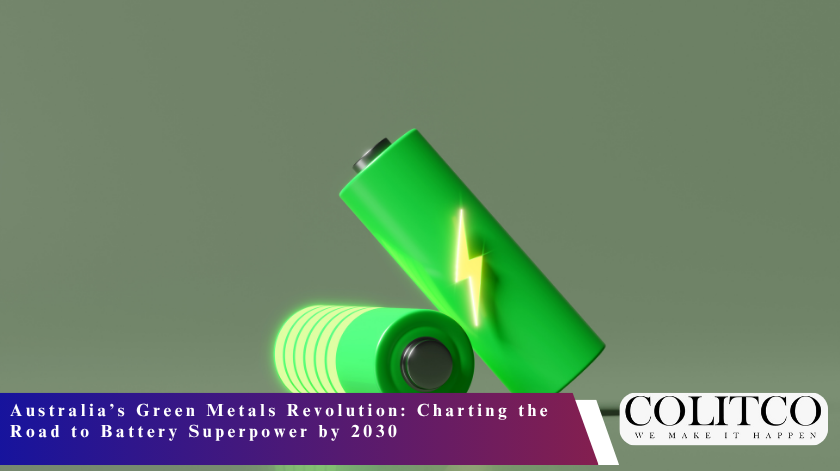Australia is strategically positioning itself to become a global leader in green metals and battery minerals by 2030. This effort aligns with the nation’s ambitions under the ASX 2030 roadmap, aiming to harness the country’s abundant resources and renewable energy to serve the booming battery and clean energy markets. The Australian government, industry stakeholders, and research institutions are collaboratively driving innovations and infrastructure investments to elevate the country’s role in the global battery supply chain.
Unlocking a $295 Billion Green Iron Export Market by 2030
Australia holds significant advantages that support its emergence as a battery mineral superpower. The country owns some of the world’s largest reserves of critical minerals required for batteries, such as lithium, iron ore, bauxite, and copper. These resources underpin the growing green metals market, which experts estimate could generate export values substantially higher than current mineral exports by 2030.
Furthermore, Australia benefits from abundant and low-cost renewable energy sources, including high-quality wind and solar power spread across vast geographic regions. This supply of renewable energy plays a crucial role in producing green metals through low-emissions processes such as hydrogen-based reduction and electrolytic refining.
The Superpower Institute highlights that with appropriate policies, Australia could export 10 million tonnes of green iron annually by 2030, with an estimated export value of $295 billion. Green aluminium exports might add another $60 billion, notably higher than current levels. Such figures indicate the scale of Australia’s green metals opportunity and its potential to contribute to global emissions reduction.
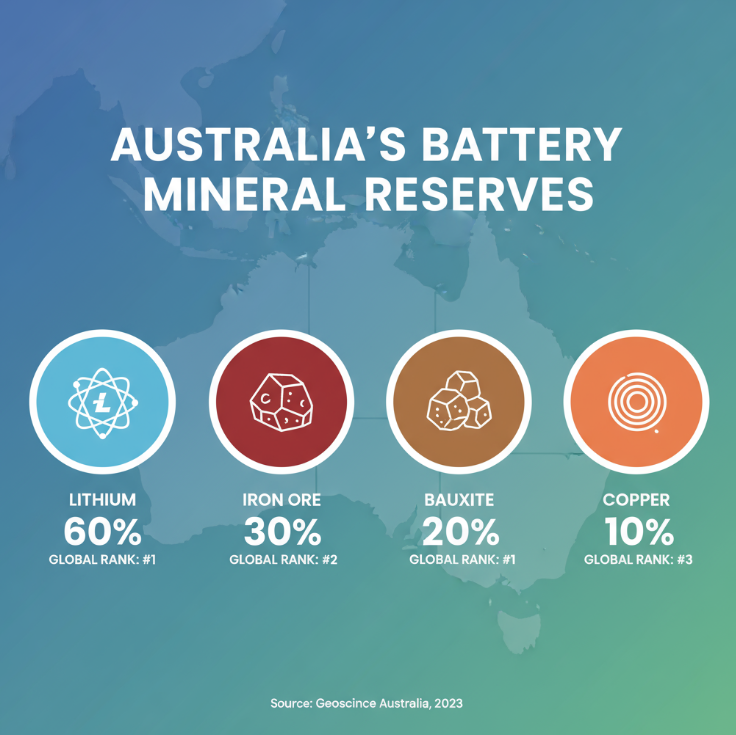
Australia’s critical mineral reserves and global market position
Government Drives National Battery Strategy
The Australian government has introduced several initiatives to catalyse the growth of the green metals and battery industries. A central effort is the National Battery Strategy, which establishes a domestic battery manufacturing industry. The strategy includes processing capacity development to refine raw minerals into battery-active materials for both domestic use and export.
Funding through the 2024–2025 federal budget allocated over A$523 million to the Battery Breakthrough Initiative, which supports battery production incentives. Additionally, A$20.3 million has been committed to boost battery research and innovation.
Prime Minister Anthony Albanese emphasises the government’s vision, stating, “We want to make more things here and with global demand for batteries set to quadruple by 2030, Australia must be a player in this field. Batteries are a critical ingredient in Australia’s clean energy mix. Together with renewable energy, green hydrogen, and critical minerals, we will meet Australia’s emission reduction targets and create a strong clean energy manufacturing industry”.
Australia’s electricity grid aims to reach 82% renewable energy by 2030, supporting the country’s pledge to reduce emissions by 43% during the same period. The government has also announced a A$7 billion tax incentive for critical mineral producers to enhance domestic supply chains. This incentive covers 10% of processing and refining costs for 31 critical minerals, applicable between 2027 and 2040.
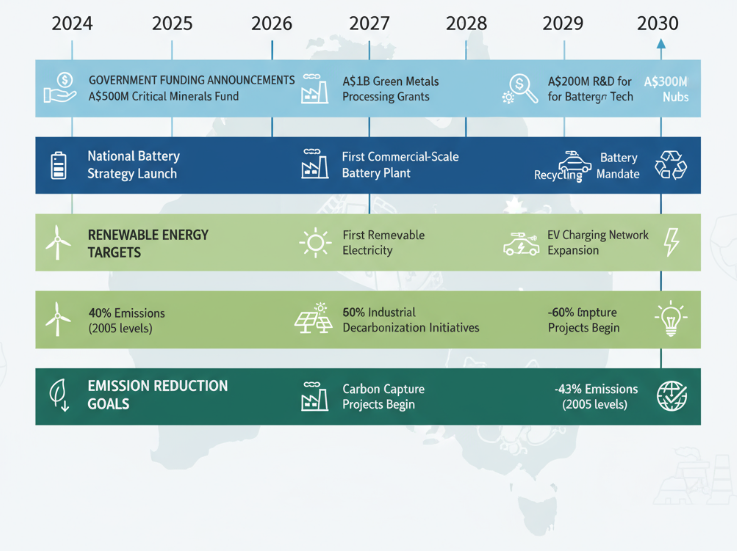
Timeline of Australia’s green metals and battery strategy initiatives
Innovation and Industry Support
The government established the Green Metals Innovation Fund, a transformative A$750 million program focused on low-emissions technologies in metals production. The fund supports pilot projects featuring hydrogen-based reduction and carbon capture methods. These initiatives aim at commercial-scale production of green metals from Australian minerals and renewable resources, fostering sustainable industry transformation.
Western Australia is positioned as a pioneer in green iron production, with projects expected to reduce global emissions by 1.2% by 2050. Projects such as Rio Tinto’s low-carbon aluminium pilot exemplify the practical advances emerging from this investment.
The fund forms part of a broader metals innovation strategy worth over A$5 billion, which aligns with the national hydrogen and critical minerals strategies. By advancing research, development, and commercial deployment of green metals technologies, Australia is enhancing its competitiveness and creating new job opportunities in regional communities.
Global Partnerships Strengthen Australia’s Battery Minerals Role
Australia is pursuing integrated approaches to develop vertically connected battery minerals supply chains. Companies like Green Technology Metals (ASX:GT1) are advancing integrated lithium businesses with upstream mining and downstream processing facilities planned in partnership with international stakeholders. This includes projects in Canada, showcasing global cooperation to secure battery minerals supply and processing.
Australia’s main trade partners such as China, India, and the European Union lack sufficient cheap renewable energy to meet their demands. Australia’s surplus renewable energy and bulk mineral resources create a comparative advantage to produce green metals efficiently for these markets. Industry executives from European green iron plants acknowledge that Europe will rely on imports of green iron produced in regions with cheaper renewable electricity, highlighting Australia’s advantage.
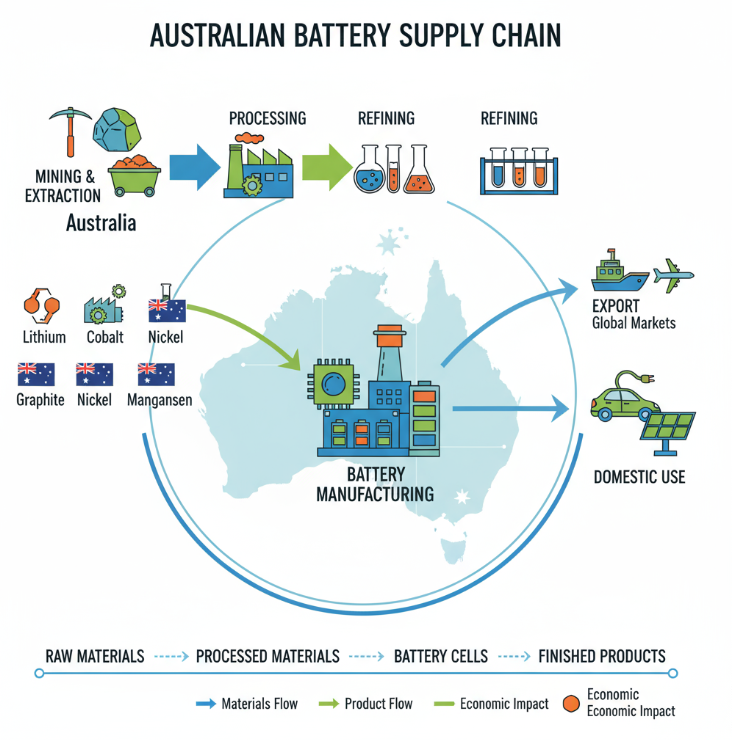
Battery minerals supply chain from mining to manufacturing
Economic Impact: Creating Jobs and Boosting GDP by 2050
Experts forecast the green metals sector could add $74 billion to Australia’s GDP and generate nearly 20,000 direct jobs by 2050. Foreign investments of $20–30 billion by 2035 could fuel industrial expansion and technological progress. Strategic investments also focus on developing a skilled workforce to support growing industry needs.
The transition to green metals production promises to revitalise industrial regions and local communities. Projects such as Queensland’s Gladstone Hydrogen Valley are examples of the inclusive economic benefits associated with this transformation.
The government’s Future Made in Australia package invests A$22.7 billion to promote jobs and sustainability while targeting net zero emissions by 2050. These efforts are foundational in securing Australia’s industrial and strategic position in the global shift towards clean energy and decarbonisation.
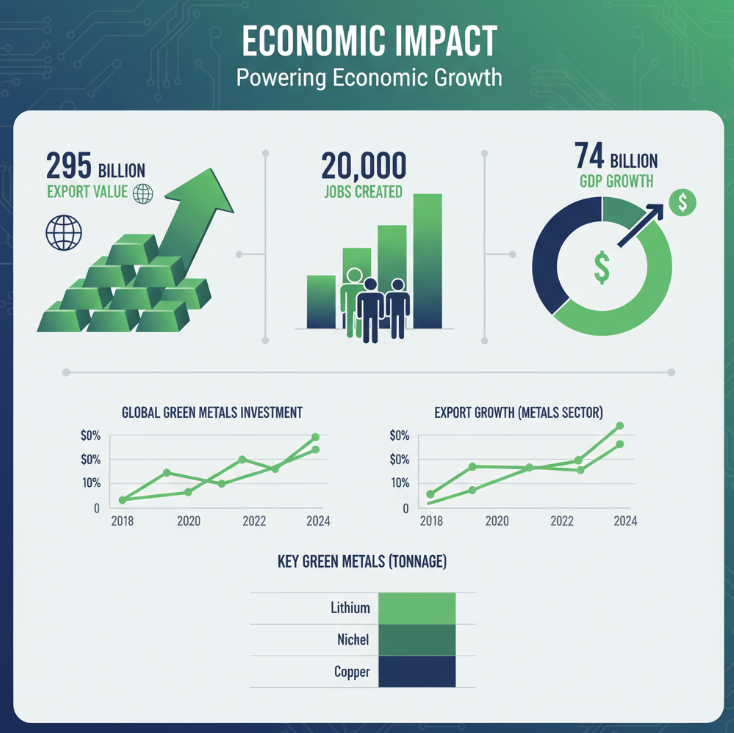
Economic benefits and job creation from the green metals industry
Australia’s Renewable Edge Powers Green Metals Leadership
Australia’s path to becoming a battery mineral superpower by 2030 hinges on leveraging its resource wealth, renewable energy capacity, and supportive government policies. Coordinated investments in innovation, infrastructure, and workforce development underpin this ambition. The country’s position as a leading green metals exporter will support the international clean energy transition while delivering substantial economic benefits at home. With continued focus and collaboration, Australia stands ready to play a central role in the global battery and green metals industries for decades to come.

